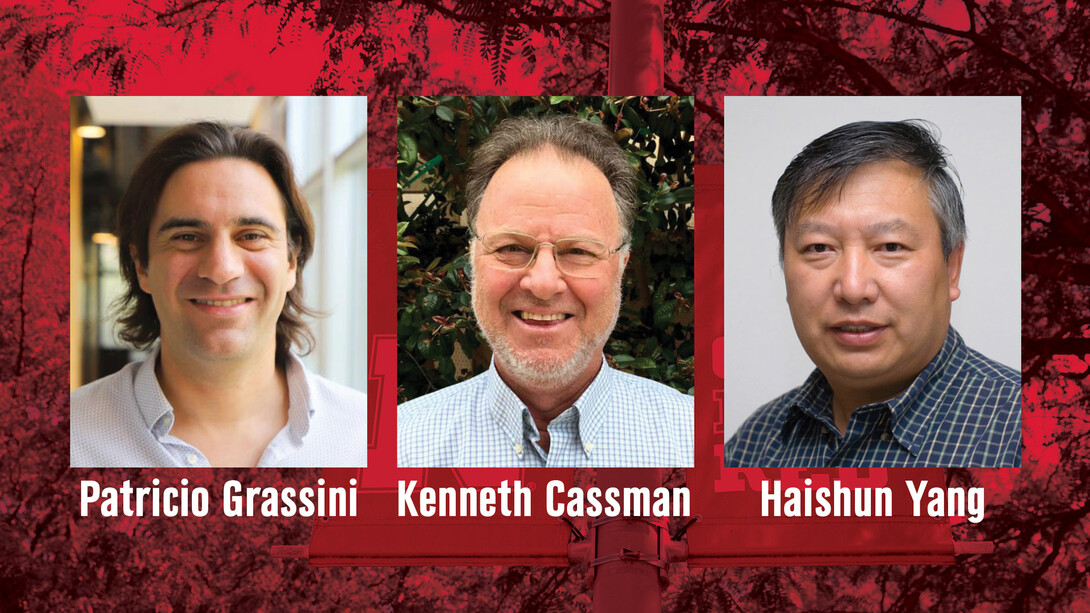
Lincoln, Neb. —The Global Yield Gap Atlas received the Creative Work of the Year award during the NUTech Ventures 2023 Innovator Celebration Nov. 6. The University of Nebraska–Lincoln and Wageningen University in the Netherlands are the project’s coordinating partners. Nebraska team members include Sunkist Distinguished Professor of Agronomy Patricio Grassini, emeritus professor of agronomy and horticulture Kenneth Cassman and agronomy and horticulture professor Haishun Yang.
This award recognizes an individual or group who has developed a creative innovation, which is typically protected under copyright.
“This is a project that started 10 years ago, and the main goal was to understand how much more food we can produce because we are in a race to feed the world in a way in which we are also sensitive to environmental protection,” Grassini said.
The atlas is the world’s leading online platform that estimates water productivity, crop nutrient requirements and yield gaps — the difference between current and potential yields — for the major food crops in 75 countries. Instead of running one experiment at one site, GYGA does thousands of experiments across thousands of fields worldwide. Local country agronomists work to ensure the reliability of the local data.
“We can aggregate the data across thousands of fields, and see small, but very significant differences, in how this management factor interacts with this one in this particular Agro-Ecological Zone,” Cassman said.
According to Yang, this tool comes up with a better answer to the question of how much crop yield can we produce in any given environment.
“While this tool is an update of the previous versions of our computer-submitted models, it can estimate better crop yield especially on the stressful conditions like water, stress or other factors,” Yang said.
High quality and locally relevant data is critical to finding answers on food availability, finite resources and environmental impacts.
“Understanding what the yield gap is provides critical input to policy makers, farmers and governments, on how much more food we can produce on existing cropland through better agronomic practices,” Grassini said. “The only critical parameter is to understand that the yield gap is the difference between what the potential is versus what the producers are now reaching in terms of productivity in their fields.”
Thousands of users across private and non-profit sectors use GYGA as reference points for strategic decision making to guide their agriculture innovation, research and investment aiming at yield optimization.
“There was a critical need for accurate, reliable information about the ability of both our country and the world to produce the food we need and to that point, there really hadn’t been a product or a scientific effort that had that as an explicit goal,” Cassman said.
NUtech Ventures has worked with the team to develop a licensing strategy for the platform’s data, which has been downloaded by more than 50,000 people worldwide and has had nearly 150,000 visitors each year. Companies pay to use the data for commercial purposes, but government users and nonprofits can access it for free. The sponsorship program was implemented in 2021 and is already helping the project become financially self-sustaining.
More details at: https://go.unl.edu/oyag







